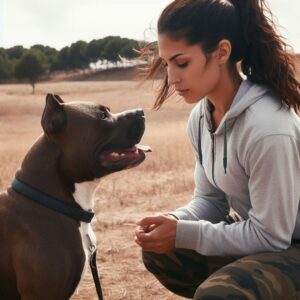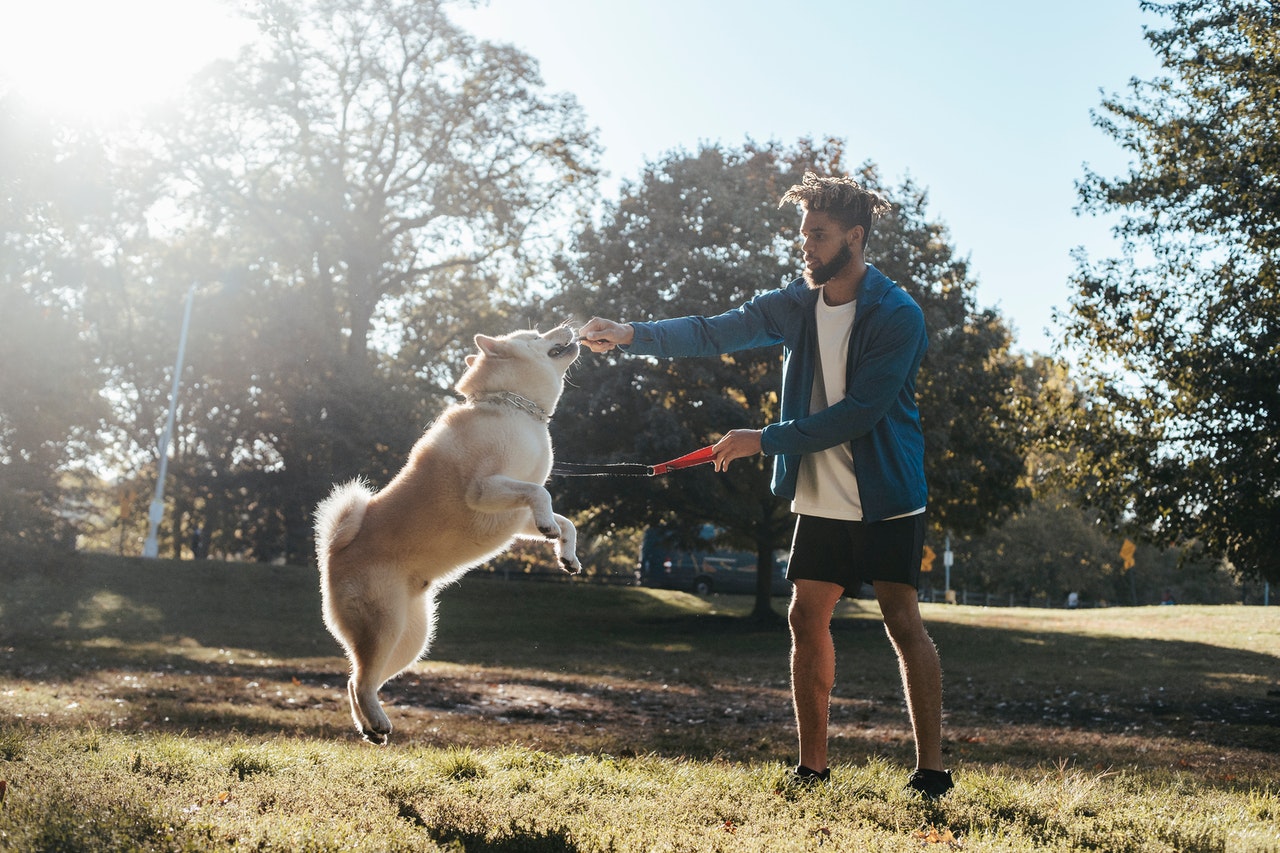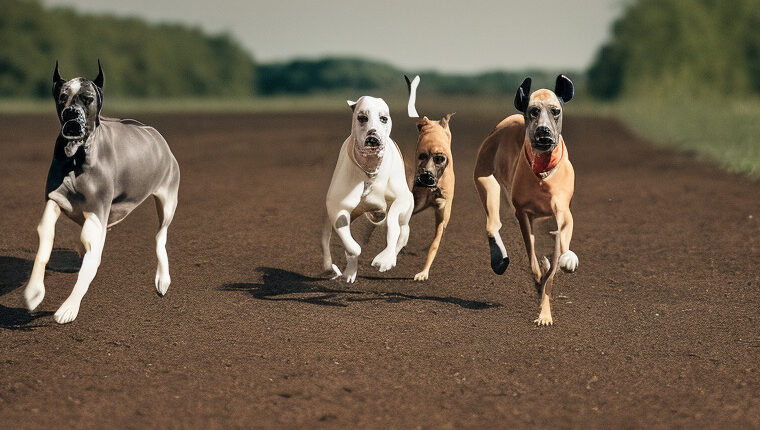Last Updated on October 25, 2023
In today’s world of dog training, using a shock collar on your Pitbull can be a controversial topic. However, when used responsibly and safely, shock collars can be a valuable tool to train your beloved pet. In this comprehensive guide, we’ll show you the right way to utilize a shock collar for your Pitbull, ensuring their safety and your peace of mind.
Understanding the Shock Collar
Before delving into the practicalities of using a shock collar, it’s essential to understand what this device is and how it works. A shock collar, also known as an electronic or e-collar, is a remote training tool that delivers mild electric stimulation to your dog when needed. This stimulation is meant to capture your dog’s attention and promote behavioral correction.
Choose the Right Shock Collar for Your Pitbull
Selecting the appropriate shock collar is the first and most crucial step in ensuring your Pitbull’s safety and effective training. Consider the following factors when making your choice:
- Size and Sensitivity
Choosing a collar that fits your Pitbull perfectly is like selecting the right-sized shoes; you don’t want them too tight or too loose. Pitbulls come in different sizes, so ensure that the shock collar you pick is designed for dogs of your Pitbull’s size and sensitivity. Collars often come with adjustable settings, which can be a lifesaver for finding that “Goldilocks” fit – not too strong, not too weak, but just right.
- Quality and Reliability
Invest in a high-quality shock collar from a reputable brand. Remember, this is not the time to go bargain hunting. A well-constructed collar is more reliable and less likely to malfunction, ensuring your dog’s safety. When it comes to shock collars, trust us, you want to stick with the big, trustworthy brands. You don’t want a budget shock collar that decides to throw a “shocktober” surprise party when you least expect it!
- Range and Features
Evaluate the range and features of the shock collar. Some collars offer a range of training modes, from gentle vibrations to stronger stimulations. Consider the specific behaviors you want to address and choose a collar that offers the necessary training modes and range for your needs. It’s like choosing a Swiss Army knife for your dog’s training – all the right tools in one.
Training with the Shock Collar
 Now that you have the right shock collar for your Pitbull, it’s time to start training. Follow these essential steps for safe and effective training:
Now that you have the right shock collar for your Pitbull, it’s time to start training. Follow these essential steps for safe and effective training:
- Start Slowly
Introduce the collar to your dog gradually. Think of it as a new fashion accessory for your furry friend. Allow them to get used to wearing it without activating the stimulation. This helps create a positive association with the collar, like getting treats for wearing the coolest new doggy jewelry.
- Positive Reinforcement
Use the shock collar in combination with positive reinforcement techniques. Reward your Pitbull with treats, praise, and affection when they exhibit the desired behavior. This reinforces the idea that good behavior is rewarded. Remember, a little treat goes a long way in the world of dogs. It’s like getting paid for doing your job – who doesn’t love that?
- Consistency is Key
Consistency is vital in dog training. Use the shock collar consistently, but sparingly, to address unwanted behavior. Always follow up with verbal commands and rewards to ensure your Pitbull understands what is expected of them. Consistency is like the secret sauce of training – it makes everything taste better.
- Avoid Overcorrection
Never overcorrect your Pitbull with the shock collar. Use the lowest effective stimulation level, and only increase it if necessary. Overcorrection can cause fear and anxiety in your dog. It’s like trying to learn a new skill – you don’t want a mentor who shouts every time you make a mistake. A gentle nudge in the right direction works better.
Common Mistakes to Avoid When Using a Shock Collar on Your Pitbull
While using a shock collar can be effective, it’s crucial to steer clear of common pitfalls:
1. Inconsistent Use
When using a shock collar, it’s essential to avoid creating negative associations in your Pitbull’s mind. This means that you should never use the collar as a form of punishment. Shocking your dog for something they did in the past or because you’re angry will only lead to confusion and anxiety.
Think of it this way: Imagine going to work one day, and your boss randomly gives you a shock for something you did last week. You’d be perplexed and likely fearful, right? Well, your Pitbull feels the same way. Instead, focus on using the collar for immediate corrections and follow it up with positive reinforcement, like a friendly pat on the back (or belly rub, in your dog’s case).
2. Ignoring Positive Reinforcement
Don’t forget to reward good behavior with treats and affection. Relying solely on the shock collar without positive reinforcement can lead to anxiety and resentment.
3. Failing to Monitor
Always keep an eye on your dog’s reactions during training. If you notice distress or fear, it’s time to reevaluate your training approach.
4. Using the Collar as Punishment
A shock collar is a training tool, not a punishment device. Using it to punish your Pitbull can create a negative association, making training less effective.
Conclusion
In conclusion, using a shock collar on your Pitbull can be an effective training tool when used responsibly and safely. Remember that the key to success is in choosing the right collar, employing positive reinforcement techniques, and maintaining consistency in your training. With these guidelines in mind, you can train your Pitbull effectively while ensuring their safety and well-being. Always prioritize the welfare of your furry friend throughout the training process, and remember, a little humor and patience can go a long way in making the process enjoyable for both you and your loyal companion.
So, put on your training hat, keep the treats handy, and embark on this journey with your Pitbull. You’re not just training a dog; you’re building a stronger bond and understanding between you and your four-legged friend. And that’s something to smile about on this pawsitively exciting adventure!
 Dog N Treats All dogs deserve to be pampered
Dog N Treats All dogs deserve to be pampered



